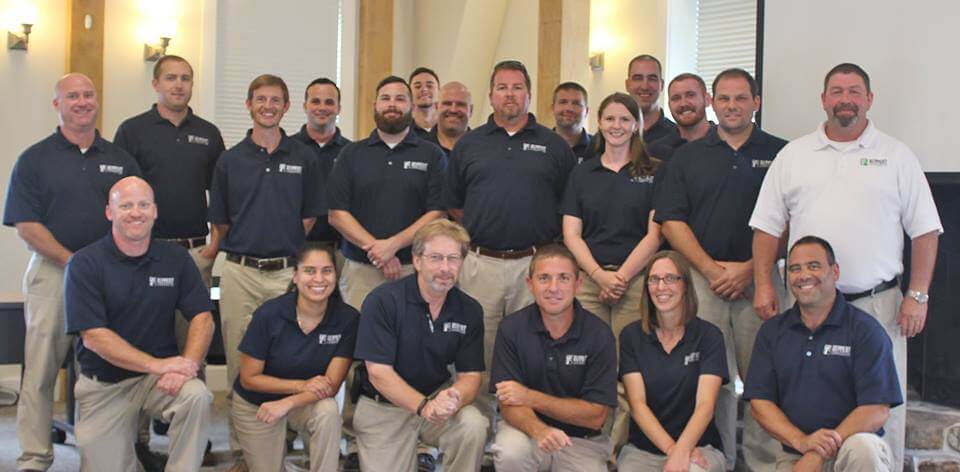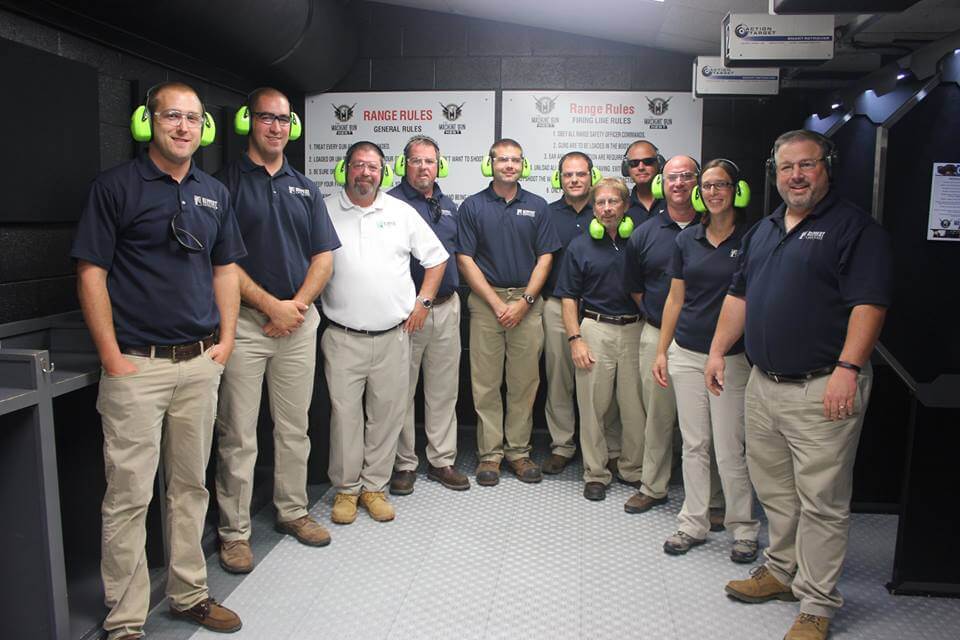By Dave Sanders, Safety and Loss Prevention Manager
 For us, safety is not only a policy, it is part of our culture. We build safety practices and principles into our everyday routines, measure our success to hold ourselves accountable, and do our best to make the workplace a safer environment for our people and to provide a quality, safe service for our customers. Over the past five years, our labor hours have increased by 75% while our OSHA Recordable Incident Rate has decreased by 26%. This trend is no accident (pun intended) – one of the main reasons for this success is the continued efforts of our Safety Committee.
For us, safety is not only a policy, it is part of our culture. We build safety practices and principles into our everyday routines, measure our success to hold ourselves accountable, and do our best to make the workplace a safer environment for our people and to provide a quality, safe service for our customers. Over the past five years, our labor hours have increased by 75% while our OSHA Recordable Incident Rate has decreased by 26%. This trend is no accident (pun intended) – one of the main reasons for this success is the continued efforts of our Safety Committee.

The Safety Committee was established over 10 years ago with the goal of minimizing injury to our people and those around us on the jobsite, on the road, and at every branch office and shop facility. Each branch has a dedicated safety representative who is responsible for emphasizing training and reporting on the branch’s annual safety efforts, administering and recording weekly tailgate topics, and attending quarterly meetings and bi-weekly safety calls. On the calls, the committee reviews incident stats, trends and year-over-year improvement, current driving behaviors on the dashboard cameras, any recent incidents and potential prevention methods, as well as seasonal hazards and relevant safety topics.
At the most recent quarterly safety meeting, the committee spent two days together covering a wide range of topics, including but not limited to:
- Industry Topics—We had several guest speakers from our insurance partners, CRS and the Hartford, come to discuss hot topics and OSHA updates including the new silica standard, aimed at preventing exposure to silica and working safely with concrete. The group learned how the new ruling affects us and how we can keep our employees safe from silica exposure. One of the easiest and most effective ways to reduce exposure is wet cutting which minimizes the amount of dust particles in the air.
- Claims Management—Dr. Robert Blink from Worksite Partners Medical Group was on hand to explain how we can get the best results from our continued use of the 24-7 injury hot line and answered questions from the group.
- New IT Innovations—Our IT department is working on a number of new solutions which will positively impact the company’s safety, including electronic claim reporting & alerts and a safety inspection checklist through the Ruppert Mobile Application.
- New Training Tools—The employee development team’s new Learning Management System (LMS) presents unique opportunities for more enhanced and efficient safety training.
On Day 2 of the quarterly safety meeting, we took a field trip to a local shooting range. While this may seem counterintuitive, there are many parallels between the safe operation of a firearm and the safe operation of the vehicles, tools and equipment that we use on a daily basis. The group attended an introduction to firearms course, worked with range personnel to learn proper procedures and then did some friendly competitive target shooting. After the shooting range, the group rounded out the day with a few more industry-related demonstrations and discussions held at our Frederick, MD landscape management branch.

Pictured L to R: Dylan Augenreich (RIM), Collin Fadrowski (BAM), Mark Innis (GAL), MichaelVispi (LIM), Joe Beretz (GVM), Ryan Rimshaw (FRM), Dave Sanders (CORP), Ken Thompson (CORP), John Oubre (MAM), Melissa Dunk (FRM) and Chris Schneider (CORP)
Our quarterly safety meetings are just one example of how we are making safety a priority and not an afterthought. Through the use of our bi-weekly safety calls, stretch & flex and morning huddle programs, tailgate talks, and consistent safety reminders, we are helping to generate ongoing dialogue about what it means to be safe on a jobsite, in the production yard and while operating vehicles, tools and equipment. Our Safety Committee, which is made up of one representative from each branch, helps us put feet on the ground in every location—spreading the message that safety keeps us growing.